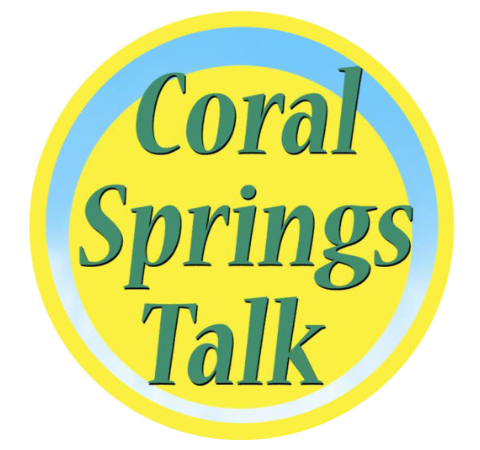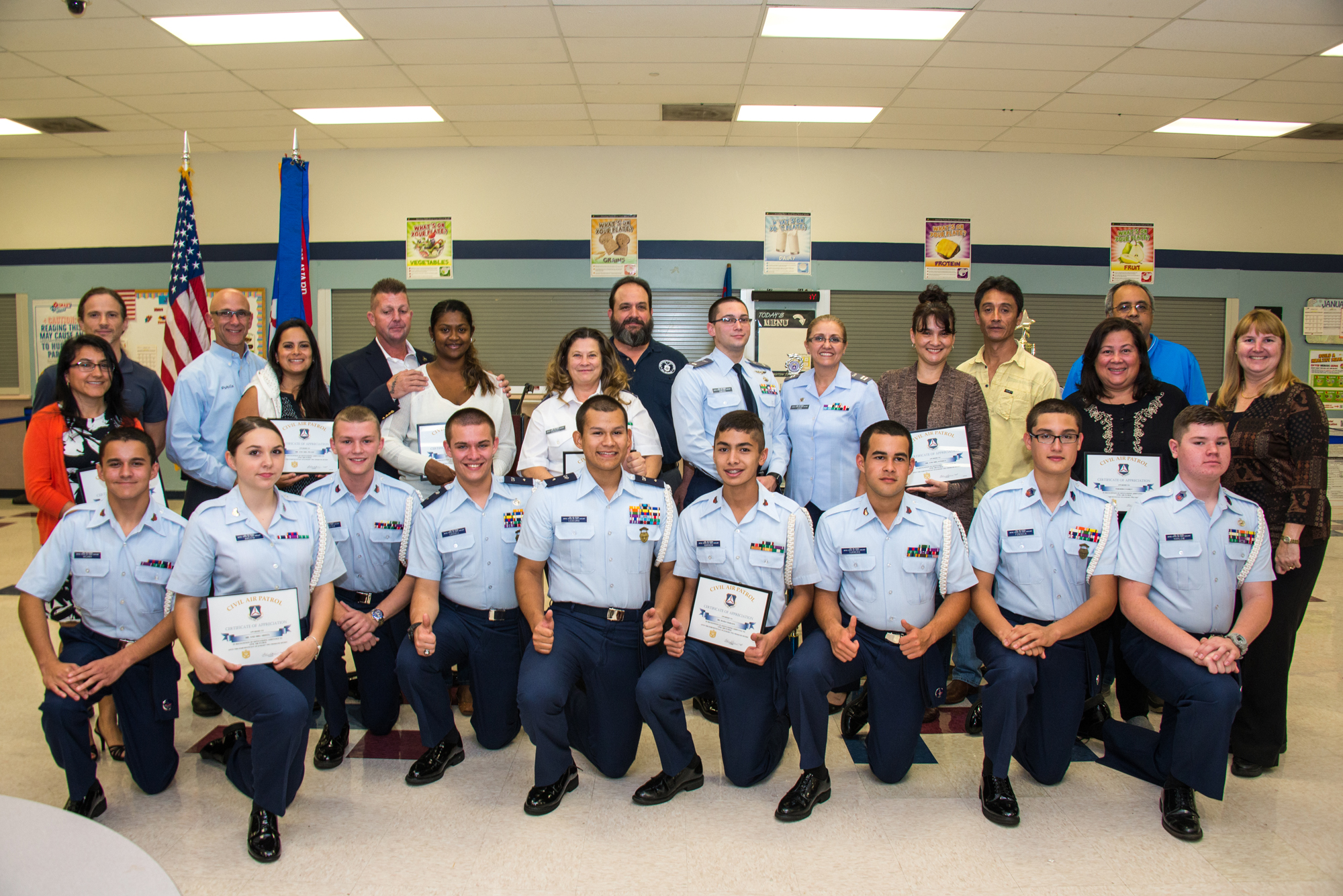
The Coral Springs Civil Air Patrol
Can’t view the slideshow on your device? Then view it on Flickr
By: Sharon Aron Baron
The Coral Springs Civil Air Patrol celebrates a trifecta of successful wins after placing second in the state against 90 other squadrons last August, taking first at regionals in Albany, Georgia in October, then becoming the grand champions at nationals at Maxwell Air Force Base in Alabama in January.
The Civil Air Patrol (CAP), the official auxiliary of the U.S. Air Force, is a nonprofit organization with 60,000 members nationwide. This all-volunteer group of dedicated boys and girls ranging in age from 12 years old and up attend local schools like Stoneman Douglas, JP Taravella, Coral Glades and Coral Springs High. Any resident is welcome to join, even home-schooled students.
The national championship has been attempted several times in the almost 30-year history of the squadron, but only achieved now said Luz Levin, who took over as commander of the squadron last June.
“The reputation, tradition, and high standards that have been passed on for more than 29 years by this squadron can be seen by the members that have come through it and have left a legacy. This has been done with a great representation of not only the US Air Force but of our great city since most of the members throughout the years are from Coral Springs and we carry a great reputation in our organization,” said Levin.
This includes Vice Mayor Dan Daley, who as a former cadet who went on to become a cadet commander. “The Coral Springs Cadet Squadron has been a leader in our community for 30 years and continues to demonstrate their ability to mold young leaders year after year,” said Daley. “Winning the national championship is proof positive that this organization can take a group of unrelated teenagers, teach them customs, courtesies, respect, commitment, and dedication modeled after the U.S. Air Force and achieve incredible things.”
Levin said that it took hard work to get this far, and they have been training intensely since last June multiple times a week, and once school started, just about every weekend. “The cadet members all are high school students that are exceptional young people that dedicated time away from their families and were self-motivated to keep up with their school and personal demands.”
The Three Missions
The Civil Air Patrol has three missions: aerospace education, cadet programs, and emergency services. The aerospace education program provides CAP members and the educational community information about aviation and space activities.
“The kids work on robotics, and they work on all types of aviation things, and part of their promotion includes these as well as being tested on aerospace education, including weather, airports, and planes,” said Levin.
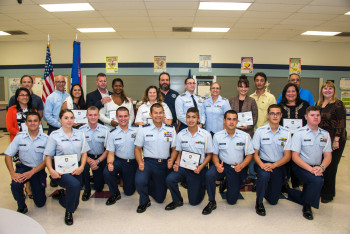
The Coral Springs Civil Air Patrol
The second is cadet programs like the color guard and color guard presentations which are ceremonies performed across the city. This also includes selling almost 300 wreaths as part of the Wreaths Across America initiative to remember, honor, and teach about the sacrifices of U.S. military veterans, which were then placed in the South Florida National Cemetery.
The third mission is emergency services. Civil Air Patrol’s emergency services include air and ground search and rescue, disaster relief, civil defense, as well as cooperation with and assistance to other emergency services agencies. The students also get orientation rides where they fly on airplanes, five times for free, as well as glider planes where they get to learn about thermals when they glide.
“So every time they go, the curriculum gets more challenging, so they’re learning more,” said Levin, who makes it clear that it’s not flying time, or time towards getting a license, but they do get a taste of what it’s all about. “Once a cadet turns 18, they actually are certified to be called for missions when planes are down; when there’s a beacon that goes off. So they get ground training and they get air training on what to do.”
Levin said interested adults can be a part of the program because they can also go out and become mission scanners or mission photographers and help out. For example, she said that air patrol was one of the very first ones to fly over ground zero to get photographs to send to the military and to the President.
The national competition encompasses all of the three missions and twelve events that the cadets had to perform which included choreographed indoor and outdoor presentation of the colors, model rocketry, public speaking, and physical fitness. They also have a written test they have to take.
After high school, cadets don’t necessarily go on into the military. While Daley went on to law school, one of their ex-commanders went on to become an attorney with the City of Miami, and one of their former cadets has gone on to medical school. “All those skills that they have learned helps them to sit during an interview, how to present themselves, versus someone who isn’t prepared.”
Each summer, cadets can attend a number of activities such as encampments, emergency service academies, National Blue Beret, flight academies, glider academies, survival orientation course, civic leadership and even an international cadet exchange trip to another country.
“We had cadets from our squadron go to Robotics Academy in California, Glider Academy in Illinois, Undergraduate Pilot Training Familiarization Course in Texas, National Emergency Service Academy in Indiana and Blue Beret in Wisconsin last summer,” she said.
The squadron meets on Thursday evenings at the Coral Springs Charter School from 6 p.m to 9 p.m under Cadet Commander Captain Jonathan Levin. Students that enroll in the Civil Air Corps can earn up to 500 service hours. Some even earn up to 1,000.
“Our squadron is very busy, as you can see. In order for them to attend, they must meet certain requirements and most of the funds come from donations and working hard at the many parking events throughout the year. These kids are amazing.“
Interested in more information? Go to their website here: Coral Springs Cadet Squadron
Author Profile

Related
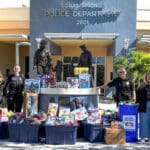 Crime & SafetyDecember 18, 2025Coral Springs Business Supports Local Communities Through Holiday Donations
Crime & SafetyDecember 18, 2025Coral Springs Business Supports Local Communities Through Holiday Donations EventsDecember 18, 2025Coral Springs Museum of Art Offers Art Therapy Programs for Veterans and Teens
EventsDecember 18, 2025Coral Springs Museum of Art Offers Art Therapy Programs for Veterans and Teens NewsDecember 18, 2025Littles From Big Brothers Big Sisters Enjoy Holiday Shopping Spree at Macy’s Coral Square
NewsDecember 18, 2025Littles From Big Brothers Big Sisters Enjoy Holiday Shopping Spree at Macy’s Coral Square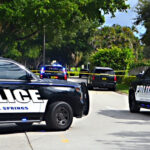 Crime & SafetyDecember 17, 2025Coral Springs Crime Blotter: $15,000 Theft Reported at Florida Panthers Facility
Crime & SafetyDecember 17, 2025Coral Springs Crime Blotter: $15,000 Theft Reported at Florida Panthers Facility
